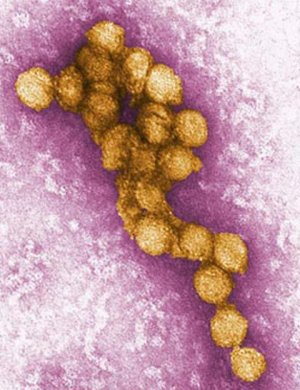
All iLive content is medically reviewed or fact checked to ensure as much factual accuracy as possible.
We have strict sourcing guidelines and only link to reputable media sites, academic research institutions and, whenever possible, medically peer reviewed studies. Note that the numbers in parentheses ([1], [2], etc.) are clickable links to these studies.
If you feel that any of our content is inaccurate, out-of-date, or otherwise questionable, please select it and press Ctrl + Enter.
Togaviruses and flaviviruses
Medical expert of the article
Last reviewed: 08.07.2025
 ">
">Togaviruses (Latin toga - cloak) are divided into 3 genera:
- alpha viruses (arboviruses of antigen group A) with the type species - Sindbis virus;
- rubivirus;
- the only representative is the rubella virus: it is not an arbovirus, it is transmitted by airborne droplets;
- Pestiviruses, including animal plague viruses that affect mucous membranes, are also not arboviruses.
Flaviviruses (arboviruses of antigenic group B), typical - yellow fever virus.
All alpha- and most flaviviruses are polyhost and circulate in nature between vertebrates and arthropods. Among them, many are causative agents of severe human diseases - yellow fever, hemorrhagic fevers, tick-borne and Japanese encephalitis, dengue, etc. All alphaviruses are ecologically associated with mosquitoes; flaviviruses are associated with mosquitoes and ticks, but some of them are isolated only from vertebrates.

